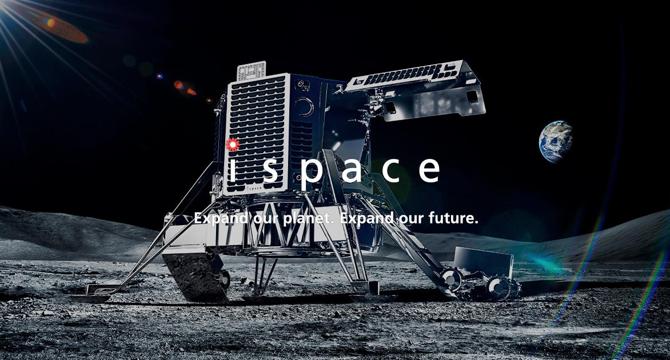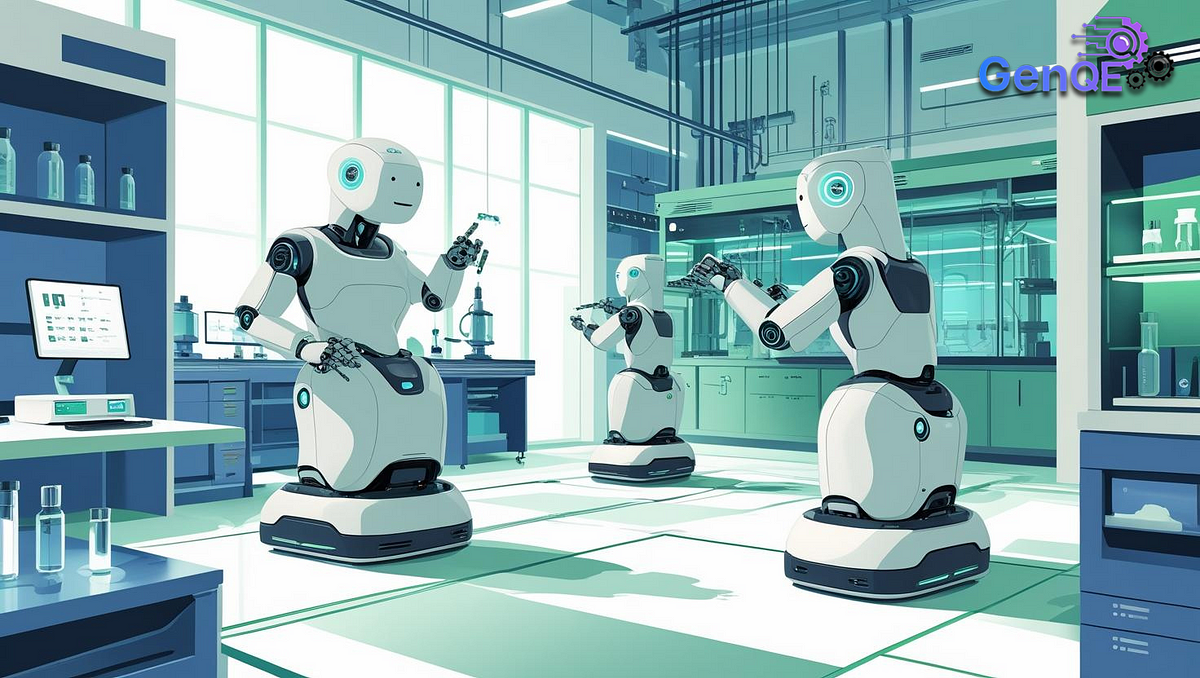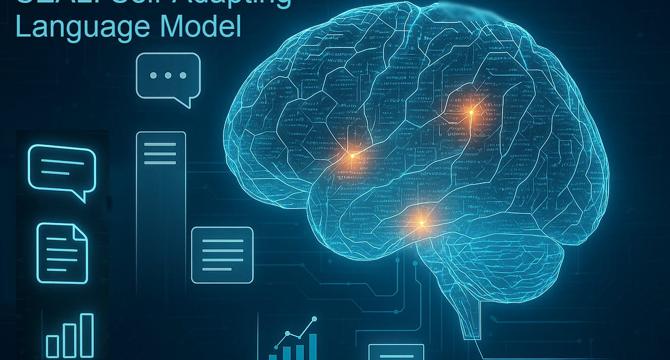Innovation News
Pymnts
173

Image Credit: Pymnts
AI Regulations: Lawmaker Says Ban on State AI Rules Will Survive in ‘Some Version’ in Budget Bill
- Senate Majority Leader John Thune expects a 10-year ban on state artificial intelligence regulations to be included in President Trump's budget bill.
- Thune believes there will be some version of the ban, although it might undergo changes based on feedback.
- The GOP aims to prevent state AI regulations from hindering innovation while promoting leadership in developing new technologies like AI and quantum.
- The debate over the state moratorium on AI rules is ongoing, with senators divided on its implications for tech companies and innovation.
Read Full Article
10 Likes
Silicon
386
Image Credit: Silicon
Sam Altman Admits Speaking With Microsoft’s Nadella Over Partnership
- OpenAI CEO Sam Altman has confirmed talks with Microsoft CEO Satya Nadella regarding their future partnership.
- Reports suggest tensions have risen between OpenAI and Microsoft as they discuss revising the terms of Microsoft's investment in the AI firm.
- Signs of tension include discussions of antitrust measures by OpenAI executives and Microsoft hosting a rival AI model to OpenAI's ChatGPT.
- Both companies are negotiating changes to their partnership, including a potential IPO for OpenAI and revisions to their contract extending to 2030.
Read Full Article
22 Likes
Silicon
8

Image Credit: Silicon
ispace Blames Laser for Moon Crash Landing
- Japanese start-up ispace revealed the crash landing reason for its second lunar lander on the Moon due to an anomaly in the Laser Range Finder, resulting in the loss of the RESILIENCE lander.
- The analysis indicated that the Laser Range Finder was slow to measure the spacecraft's distance to the lunar surface, leading to a hard landing and subsequent crash.
- ispace founder expressed regret for the unsuccessful landing, but the company remains committed to identifying root causes and preparing for future missions.
- Despite two failed attempts, ispace plans for a third moon landing try in 2027 with additional tests and improvements to address previous shortcomings.
Read Full Article
Like
Medium
36

Image Credit: Medium
AI is Cannibalizing the Hand that Feeds it
- Memory technologies like High Bandwidth Memory (HBM) are vital for AI efficiency.
- AI advancements include logical reasoning, multi-agent systems, and reinforcement learning.
- AI-driven applications expanding in industries like marketing, wearables, cybersecurity, and consulting.
- Discussions also covered the importance of AI in threat detection and defense workflows.
- AI consulting faces challenges from generative AI and changing client demands.
Read Full Article
2 Likes
Silicon
396
Image Credit: Silicon
Tesla Robotaxis Catch Attention Of Federal Safety Regulators
- The launch of Tesla's robotaxi service in Austin has caught the attention of federal safety regulators in the United States.
- The US National Highway Traffic Safety Administration (NHTSA) contacted Tesla following reports of Tesla robotaxis violating traffic laws in Austin.
- Tesla's robotaxi service began with a 'lowkey' launch in Austin, involving 12 Model Y vehicles with human 'safety monitors' onboard.
- The robotaxi rides are limited to a geofenced area of Austin to ensure safety, although videos online showed instances of speeding and swerving.
- The NHTSA is collecting additional information from Tesla regarding the reported incidents to enforce safety laws.
- Tesla's Full Self-Driving Supervised (FSD) software manages steering and braking but requires driver attention.
- Elon Musk previously claimed Tesla was close to achieving level 5 autonomous driving, where human intervention is unnecessary.
- Currently, Tesla's FSD is classified as level two, necessitating driver alertness and hands on the wheel.
- Tesla's robotaxis employ unsupervised FSD technology and rely on cameras instead of lidar and other sensors like Waymo.
- The NHTSA stated that manufacturers certify vehicle safety standards, and NHTSA investigates incidents involving potential safety defects.
- NHTSA's law enforcement is based on a data-driven, investigative process, ensuring road safety.
- The incidents raise concerns about the safety and regulatory compliance of Tesla's robotaxi operations.
- Tesla's approach to autonomous driving technology may undergo scrutiny as regulators gather more information.
- The use of advanced driver-assistance systems like FSD raises questions about the level of autonomy and driver responsibility.
- The differences between Tesla's robotaxis and competitors like Waymo highlight varying approaches to autonomous vehicle technology.
- The outcome of NHTSA's investigation could impact Tesla's future plans for autonomous driving and robotaxi services.
Read Full Article
23 Likes
Silicon
244
Image Credit: Silicon
Silicon UK In Focus Podcast: From Data to Decisions
- Silicon UK's In Focus Podcast, hosted by David Howell, delves into turning AI insights into enterprise action in the latest episode.
- The episode explores the challenge of translating data and AI-generated insights into impactful decisions for businesses.
- AI's potential lies in enabling smarter actions, moving beyond just informative dashboards.
- The discussion focuses on converting predictive models into tangible performance improvements.
- Guest James Fisher, Chief Strategy Officer at Qlik, provides insights on activating data for real business outcomes.
- James Fisher oversees Qlik's Corporate Strategy and has extensive experience in software and consulting businesses.
- Before his current role, James held key positions in strategic marketing and product management.
- His background includes working with analytics, performance management, finance, and mobile solutions.
- Prior to Qlik, James was involved in product marketing at SAP and held roles at BusinessObjects, Cartesis, and PwC.
Read Full Article
14 Likes
Medium
208

Image Credit: Medium
Unity for the Mind”: What If We Could Share Thinking Itself?
- The author pondered on the challenge of expressing complex ideas in a way that can be easily understood by others.
- They were inspired by the story of a man who regained speech through a brain implant, prompting them to consider the idea of sharing thoughts directly.
- The concept involves transmitting structured thoughts rather than using words or symbols, allowing others to interpret it in their preferred form.
- The idea is likened to having an internal Unity engine, where thoughts are shared as shapes or patterns.
- Potential benefits include a deeper understanding of subjects like math, improved communication, and enhanced empathy for those with different experiences.
- The author envisions a future where tools can transmit thought patterns, fostering a new level of connection among individuals.
- They emphasize that the concept is grounded in real-world developments such as brain-to-brain experiments and speech-restoration through brain signals.
- Although acknowledging that the idea may seem like a dream, the author draws parallels with past innovations like speech recognition and synthetic voice technology.
- The author concludes by expressing hope that one day, individuals will be able to understand each other directly and clearly by sharing thoughts.
- Throughout the text, the author reflects on their own experiences of feeling the challenge of understanding more than they can explain.
- The article presents a vision of a future where technology enables a deeper and more intuitive form of communication among people.
- The author, Olesya Kalugina, identifies as a trainer, thinker, and dreamer, with a goal of making thoughts more understandable.
- The narrative suggests a shift towards sharing thoughts beyond words, potentially revolutionizing the way humans communicate and connect.
- The piece advocates for leveraging advancements in neuroscience and technology to enable a more direct and comprehensive sharing of thoughts and ideas.
- It concludes with an invitation for readers to share their thoughts and feelings on the concept presented in the text.
Read Full Article
12 Likes
Medium
108

Image Credit: Medium
Leading from the Edge: The Technology Gamble That Paid Off
- G+D Netcetera’s Forward Publishing powers online news sites and mobile apps for regional newspapers in Germany and Switzerland.
- The architecture design involved a reverse-proxy cache in front of content backends with short TTLs to balance throughput and content freshness.
- Reworking the backend architecture was deemed necessary due to redundant computation in processing requests for relatively unchanged content.
- The new approach aimed to move computation from request time to change time, fetching pre-denormalized content from a content event hub for efficiency.
- RAMA was chosen to simplify rendering, event-sourcing, and the database structure, improving system topology.
- An incremental content denormalization engine built using RAMA offered real-time, always-up-to-date content for customers.
- The transformation led to significant improvements in content propagation speed, system load handling, and database query simplification.
- Fully committing to bleeding-edge technology like RAMA carried risks but also drove the team, product, and business to new levels of success.
- Taking risks and committing to innovative technology can lead to substantial impacts on product development and business growth.
Read Full Article
6 Likes
Medium
239

Image Credit: Medium
Beyond Automation: The Rise of Autonomous Testing in 2025
- Autonomous testing utilizes AI and machine learning for real-time testing decisions, surpassing conventional automation.
- It minimizes human intervention by adapting to application changes, auto-generating test cases, and prioritizing tests based on risk assessments.
- The system analyzes application flows, code changes, and user behavior to maintain evolving test coverage alongside applications.
- It addresses challenges posed by complex architectures, frequent deployments, multi-device support, and rapid UI changes.
- Key capabilities include AI-driven test case generation, self-healing functionality, risk-based testing intelligence, and continuous learning.
- Leading platforms like Testim, Functionize, ACCELQ, Mabl, Applitools, and TestSigma offer diverse autonomous testing solutions.
- Integration with DevOps pipelines enhances full-lifecycle quality assurance within continuous integration and deployment workflows.
- Strategic integration with existing QA practices optimizes effectiveness by combining autonomous testing with traditional automation.
- Limitations include the need for high-quality historical data, human supervision during initial implementation, and challenges with dynamic UI logic.
- Autonomous testing does not replace human creativity but complements it, evolving into an essential component of modern software development.
- With potential time savings and coverage improvements outweighing setup costs, autonomous testing is becoming integral for complex technological environments.
Read Full Article
14 Likes
Medium
126

Image Credit: Medium
Would You Choose to Live on Earth Forever?
- An individual, reflecting on a dinner event, contemplates the idea of living on Earth forever and questions the interest of others in such possibilities, especially in the context of cultural dynamics.
- The person discusses the concept of immortality and technological advancements that make it seem more plausible today.
- While acknowledging technological progress, the individual personally expresses a firm refusal to live on Earth forever, emphasizing the natural cycle of life and the value of letting go of memories.
- Concerns are raised about the implications of eternal rule and the potential misuse of immortality technology by individuals with malicious intentions.
- Cultural perspectives, such as traditional Chinese beliefs regarding death and the soul's journey, are considered in the discussion about immortality.
- The individual shares personal experiences and feelings related to loss and the belief in life's impermanence as a source of beauty.
- Readers are invited to share their opinions and perspectives on the topic of immortality.
- The article presents a contemplative exploration of the ethical and existential implications of immortality and technology on society and individuals.
- It delves into personal beliefs and cultural influences on the concept of living forever on Earth, prompting readers to consider their own views on the matter.
- The individual's refusal to embrace immortality is based on a philosophical perspective that values the natural cycles of life and the beauty found in impermanence.
- The article touches on themes of memory, loss, cultural traditions, and the potential societal ramifications of immortality technology.
- A call-to-action is included, inviting readers to engage in a dialogue about their stances on the idea of eternal life and the ethical considerations surrounding it.
- The author highlights the complexity of the immortality debate, acknowledging both the allure of technological advancements and the importance of respecting natural processes.
- Discussion points encompass personal experiences, moral reflections, and the broader societal implications of pursuing immortality.
- The article provides a nuanced perspective on the topic, encouraging readers to contemplate their beliefs and values in relation to the possibility of living indefinitely.
- The author's stance against immortality is grounded in a philosophical understanding of life's transience and the significance of accepting its cycles.
- Overall, the article invites introspection on the meaning of life, memory, and mortality, prompting readers to consider their own attitudes towards the concept of eternal existence.
Read Full Article
7 Likes
Pymnts
109

Image Credit: Pymnts
Velera Builds Governance Framework to Shield Credit Unions From AI Risk
- Credit unions are adopting AI to transform operations, enhance compliance, and improve customer interactions.
- AI governance is essential for credit unions to enable tools like compliance monitoring and back-office streamlining.
- Establishing transparent AI governance frameworks upfront is crucial for navigating the regulatory environment.
- AI is being used in credit unions for improving tasks like call report preparation and member interaction.
- Retrieval augmented generation (RAG) is helping credit unions provide faster and more accurate service to members.
- AI assists in personalizing interactions, offering real-time assistance, and enhancing financial wellness for members.
- Agentic solutions give members options to authorize actions, thus building trust and strengthening relationships.
- AI benefits extend to commercial clients, especially small businesses, by helping with tasks like invoice generation and contract reviews.
- Velera is partnering with the Responsible AI Institute to provide AI solutions for credit unions, emphasizing responsible AI frameworks for the future.
- Building trust with members is crucial in the adoption and implementation of AI solutions in credit unions.
Read Full Article
6 Likes
Medium
392

Image Credit: Medium
How MIT’s Self-Adapting Language (SEAL) Models Could Transform AI Learning?
- Large language models like GPT-4 lack the ability to learn from experience, resetting at every conversation.
- Traditional LLMs are trained through pretraining and are unable to adapt without costly re-training.
- MIT's Self-Adapting Language (SEAL) models aim to address this limitation by enabling continual learning.
- SEAL models learn from interactions, refine outputs based on feedback, and evolve over time.
- MIT seeks to revolutionize AI learning by incorporating adaptive capabilities into language models.
- SEAL models could significantly enhance AI's problem-solving and adaptation in various scenarios.
- They have potential applications in fields like robotics, customer service, and healthcare.
- SEAL models focus on incremental learning, improving accuracy and efficiency.
- By adapting constantly, SEAL models aim to mimic human-like intelligence in AI systems.
- They strive to overcome the fixed nature of traditional LLMs through continuous evolution.
- MIT's SEAL models aim to shape the future of AI by making machines more responsive and adaptable.
- Their approach could lead to AI that better understands context and user preferences.
- SEAL models a step towards AI models that dynamically adjust based on real-time feedback.
- MIT's research in this area is advancing the frontier of AI technology.
- The Self-Adapting Language models could revolutionize AI-based applications in various industries.
- The evolving nature of SEAL models could redefine the capabilities of artificial intelligence systems.
Read Full Article
23 Likes
Pymnts
30

Image Credit: Pymnts
Google DeepMind Introduces AI Model That Runs Locally on Robots
- Google DeepMind introduced a vision language action (VLA) model that operates locally on robotic devices without needing a data network.
- The Gemini Robotics On-Device model offers task generalization, dexterity, and fast adaptation capabilities.
- This model is designed for bi-arm robots and allows rapid experimentation with tasks like folding clothes, unzipping bags, and assembling products.
- It is Google DeepMind's first VLA model available for fine-tuning to achieve better performance for specific applications.
- The model can adapt to new tasks with minimal demonstrations, showcasing its ability to generalize foundational knowledge.
- Robotics companies like Google DeepMind are focused on developing humanoid robots capable of general tasks.
- Advancements in Gemini Robotics aim to create multimodal robots that can understand natural language commands and perform complex tasks.
- Gemini's multimodality opens up possibilities for new consumer products at Google.
- Various companies are progressing in developing AI-powered robots that excel in general tasks, leading to a competitive market.
- Robotics and AI continue to merge, showcasing innovations in versatile robotic capabilities.
- The development signifies the industry's shift towards localized AI models for enhanced efficiency and adaptability.
- Companies are leveraging AI advancements to enhance robotic functionalities and cater to diverse market needs.
- AI-powered robots are becoming more prevalent in various sectors, promoting the growth of versatile robotic applications.
- The introduction of on-device AI models marks a significant step in advancing robotic capabilities and reducing dependency on external networks.
- Google DeepMind's efforts in developing on-device AI models reflect the industry's trend towards autonomous and adaptable robotic systems.
Read Full Article
1 Like
Silicon
165
Image Credit: Silicon
Anthropic Did Not Violate Authors’ Copyright, Judge Rules
- Anthropic received good news in a copyright infringement lawsuit where a judge ruled their use of books to train AI was fair use and transformative.
- Amazon-backed Anthropic was sued by three authors for misusing their books to train their AI chatbot Claude.
- The lawsuit alleged Anthropic used pirated versions of books to teach Claude to respond to human prompts.
- Authors claimed Anthropic built a business by stealing copyrighted books and requested monetary damages.
- US District Judge ruled that Anthropic's AI training did not violate authors' copyrights as AI models did not reproduce creative elements.
- The ruling stated that using copyrighted works to train AI models for generating new text was transformative.
- The decision is seen as significant for AI companies facing copyright infringement lawsuits.
- Judge's ruling sets legal limits and opportunities for the AI industry going forward.
- Some AI firms have made licensing deals with content providers to address legal concerns.
- Judge ordered a trial on pirated material in Anthropic's central library, though not used for AI training.
- The judge mentioned that buying a copy of a book later does not absolve liability for earlier theft.
- The ruling indicates the importance of understanding legal boundaries and opportunities in the AI industry.
- Overall, the ruling is beneficial for AI companies facing copyright challenges.
- The decision could lead to more defined legal frameworks for AI usage of copyrighted content.
- Anthropic's case highlights the ongoing debate around fair use and copyright in AI development.
- The ruling could impact how AI firms approach and handle copyrighted material in the future.
Read Full Article
9 Likes
Pymnts
353

Image Credit: Pymnts
OpenAI Ramps Up Office Productivity Features for ChatGPT
- OpenAI is enhancing ChatGPT with office productivity features, putting it in competition with Microsoft and Google.
- New features include Record Mode for transcribing meetings, Enhanced Projects with research abilities, Advanced Voice with live translation, Connector support for various platforms, and updated Canvas for document exporting.
- ChatGPT aims to revolutionize productivity workflows by offering intelligence-centric work rather than document-centric approaches.
- Experts have differing opinions on ChatGPT's potential to challenge Microsoft Office, with some praising its capabilities and others expressing skepticism.
- While some see AI-native workflows as the future, concerns remain about ChatGPT's accuracy and data privacy issues.
- Despite its advancements, some experts believe ChatGPT still has limitations compared to established productivity tools like PowerPoint.
- Some express caution due to OpenAI's history of privacy concerns and data ownership issues.
- OpenAI has been leveraging Google's Cloud Service for additional computing capacity and has gained a significant number of paying business subscribers.
- Overall, ChatGPT's evolution in office productivity features is notable and raises questions about its potential impact on traditional productivity software.
- The story was first reported on PYMNTS.com.
Read Full Article
17 Likes
For uninterrupted reading, download the app